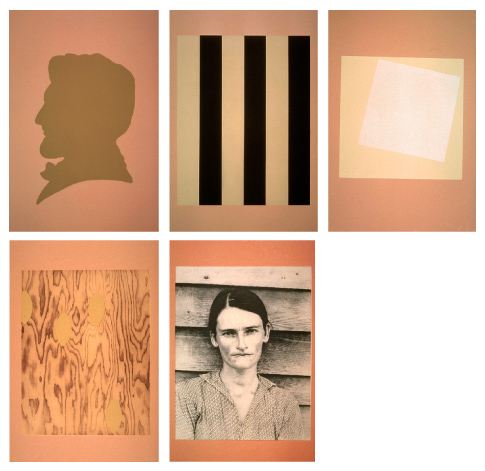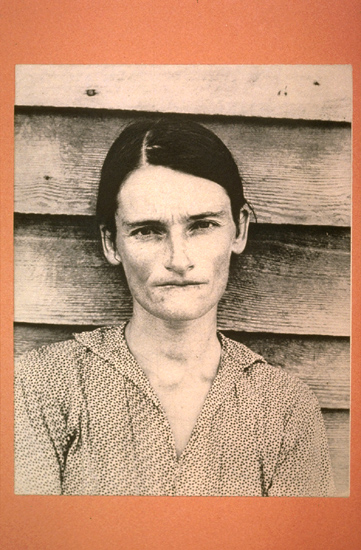Noted for her contributions to the field of appropriation art, Sherrie Levine works to reframe the significance attributed to originality, authenticity, and ownership. Her methods of art-making challenge the hierarchy that favors the original. Her work includes re-photographing well known photographs and re-drawing, painting, or sculpting famous artworks. By layering frame upon frame over her source material, Levine creates a space in which the monopoly on value granted by originality begins to falter. Curator Alex Freedman calls Levine’s practice an effort “to offer ideas rather than artifacts.” Todd Alden of the Whitney Museum of American Art understands Levine’s work “as a hall of mirrors—a series of pictures within pictures.” Levine herself asks, “What is the same? What do we own? …When every image is leased and mortgaged, a photograph of a photograph is no more remarkable than a photograph of a nude.”
Born in Hazleton, Pennsylvania in 1947, Levine grew up experiencing art through secondary sources, such as books and magazines. During college at the University of Wisconsin, Madison, she took commercial art jobs that catalyzed her interest in image repetition and mechanical reproduction. In 1977, Levine was one of five artists included in the landmark exhibition “Pictures,” mounted at Artist’s Space in New York City. Curator Douglas Crimp regarded the picture in society as having eclipsed firsthand experience and usurped reality, and called Levine’s act of appropriating photographs the purest example of photography as art.
Four years later Metro Pictures Gallery mounted Levine’s first major solo exhibition, a group of Depression-era photographs that were re-photographed from Walker Evans’ series made for the Farm Securities Administration. The image for which Levine is perhaps most famous was included. Titled “After Walker Evans,” the image shows Allie Mae Burroughs, the sharp-eyed, thin-lipped sharecropper’s wife from Evans’ iconic photograph. In the 1981 press release, Levine’s straightforward style of re-presenting imagery is said to provide “potent political and aesthetic commentary on the nature of photography, its status as a document or a work of art, a copy of an original, a picture, or a fact.”
Levine’s acts of reproduction and appropriation became known internationally in the 1980s. Major exhibitions of her work have examined its additional facets, such as art historical critique, abstraction, and issues of identity and womanhood. Exhibitions include the 2008 Whitney Biennial; a remounting and expansion of the group exhibition “Pictures” at the Metropolitan Museum of Art (2009); “America is Hard to See”, Whitney Museum of American Art (2015); “Ordinary Pictures”, Walker Art Center, Minneapolis (2016); and “Brand New: Art and Commodity in the 1980s”, Hirshhorn Museum and Sculpture Garden, Washington, D.C. (2018). Sherrie Levine lives and works in Santa Fe, New Mexico and New York City. She is represented by David Zwirner in New York and Xavier Hufkens in Brussels.
-Christine M. Peterson, Crown Point Press
PARKETT NO. 32: IMI KNOEBEL / SHERRIE LEVINE (1992)





